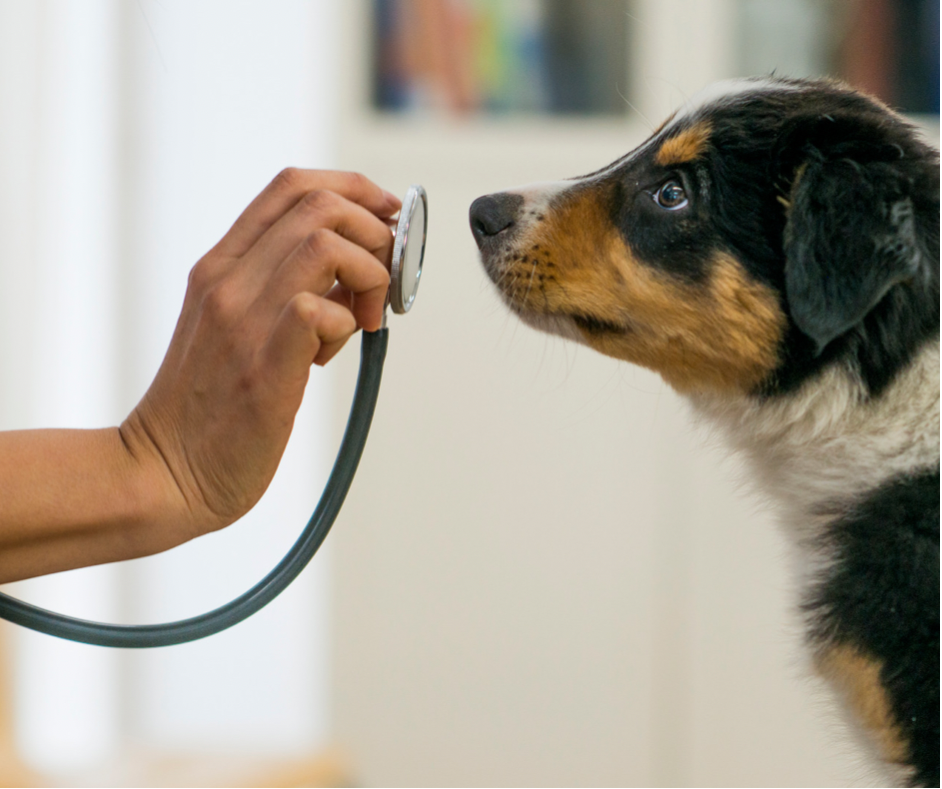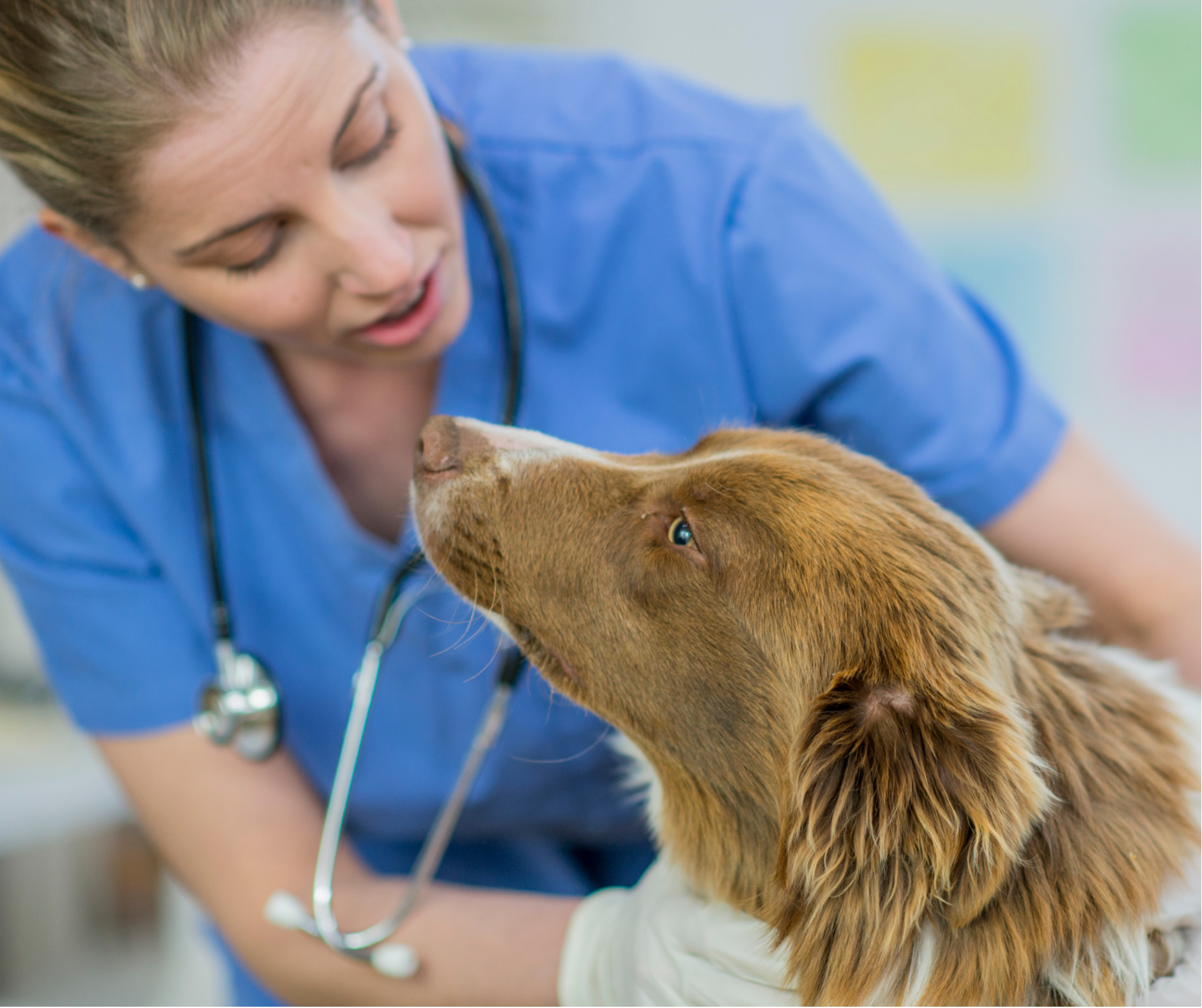Pain is essential as it helps protect the body from harm, but it can also be challenging to identify in dogs. Understanding pain in dogs and getting veterinary referrals are important in behaviour modification. Pain is an uncomfortable sensation nearly always associated with tissue damage and can present as behavioural issues.
Dogs naturally have a deep instinct to hide the pain but when looking at the effect pain has on behaviour, we not only look at the physical side but also the mental and emotional dimension and impact it has on our pets.

Do you know what signs of pain could look like in your dog?
Evidence of pain in dogs may manifest in various ways. Here are some signs to watch out for in your dog:
– Depression
– Behavioural changes
– Tremors, trembling, shaking, panting
– Slow/stiff when getting up
– Flickering or twitching of the skin
– Warm or hot areas on the body
– Uncomfortable being touched
– Not wanting to play at all (or as much as usual)
– Being unusually slow or stiff after routine exercise
– Chronic lameness
– Losing their wag – unusual tail posture
– Not shaking correctly (should be vigorous from the head to the tail)
– Changes in posture
– Seeming reluctant or not wanting to jump
– Having a pained grimace
– Knowing something just ‘isn’t right’
In any of these cases, a veterinary check-up is needed or a referral to a canine physiotherapist to help diagnose the source of pain and provide guidance on a treatment plan or pain management.
Understanding pain in dogs
Pain and behaviour go hand in hand. Just think how short-fused you are and how you struggle to focus when you are in pain. We work very closely with veterinarians, and when new clients come to us with behavioural issues and always start with your dog having a complete physical check-up at the vet. The vet check must be completed close to the time of the first behavioural session, and therefore a vet visit a couple of months ago will not be sufficient.
Understanding pain and getting veterinary referrals are what a good behaviourist should be discussing on the initial telephone conversation you have with them.

Vets in Kidderminster and surrounds:
Vale Veterinary Group
Kidderminster & Stourport: https://www.valevetgroup.co.uk
Vets4Pets
Kidderminster: https://www.vets4pets.com/practices/vets4pets-kidderminster/
Stourbridge: https://www.vets4pets.com/practices/vets4pets-stourbridge/
Companion Care
Kidderminster: https://www.companioncare.co.uk/practices/companion-care-kidderminster/
Shepherd’s Vet Centre
Kidderminster: https://www.shepherdsvets.com
Bay Tree Veterinary Centre
Stourport: https://www.baytreevets.co.uk
Severn Edge Vets:
Bewdley: https://www.severnedgevets.co.uk/branches/bewdley
Kinver: https://www.severnedgevets.co.uk/branches/kinver
Clent Hills Vets
Hagley: https://www.clenthillsvets.co.uk/en-gb/branches/hagley
Paveley and Day Veterinary Centre
Stourbridge: https://www.paveleyandday.com
AK Duncan; The Veterinary Surgery
Stourbridge: https://www.akduncanvets.co.uk
Following a full vet check, we work on an appropriate behavioural training therapy to help your dog be relaxed and happy again. We work as a collective team of experts who put your dog’s best welfare interests first.

Frequently Asked Questions
Why do dog behaviourists always need a vet referral?
Pain, discomfort or any other medical condition can directly cause or exacerbate any behaviour problem or complicate its treatment. It’s essential that organisations such as the Association of Pet Behaviour Counsellors (www.apbc.org.uk ) consider a vet referral a requirement for their members.
Having a vet on board is better all around. For the owner, tackling the problem from both a veterinary and behavioural perspective will save time and money as treatment is more successful, and behaviour will improve faster. But really, it’s all about the dog, and a good relationship between the owner, vet, and behaviourist will help maintain excellent welfare standards and promote a happy and healthy lifestyle.
Are you looking for a dog behaviourist in Kidderminster?
Feel free to contact The Confident K9 here https://www.theconfident-k9.com/contact/
What does a dog behaviourist do?
Behaviourists deal with issues such as fear-based aggression/reactivity, fear-based anxiety, inappropriate vocal behaviours, separation anxiety and abnormal repetitive behaviours. They work on the emotional response to stimuli rather than just obedience training.
Check out what behaviour packages The Confident K9 offers here: https://www.theconfident-k9.com/dog-behaviour/
Why is understanding pain in dogs and getting veterinary referrals necessary when my dog needs behaviour training?
It is vital that any physical discomfort is ruled out before starting behaviour training due to the
How does pain affect behaviour?
Animals are nonverbal and cannot self-report any pain they experience, therefore veterinary professionals must assess pain whether a suspected root cause of unwanted behaviour is present or not. The Dogs Trust has put together a fantastic table on how underlying health conditions can affect canine behaviour.
Disclaimer: The information provided in this blog is for informational purposes only. Read our full Disclaimer.








Comments are closed